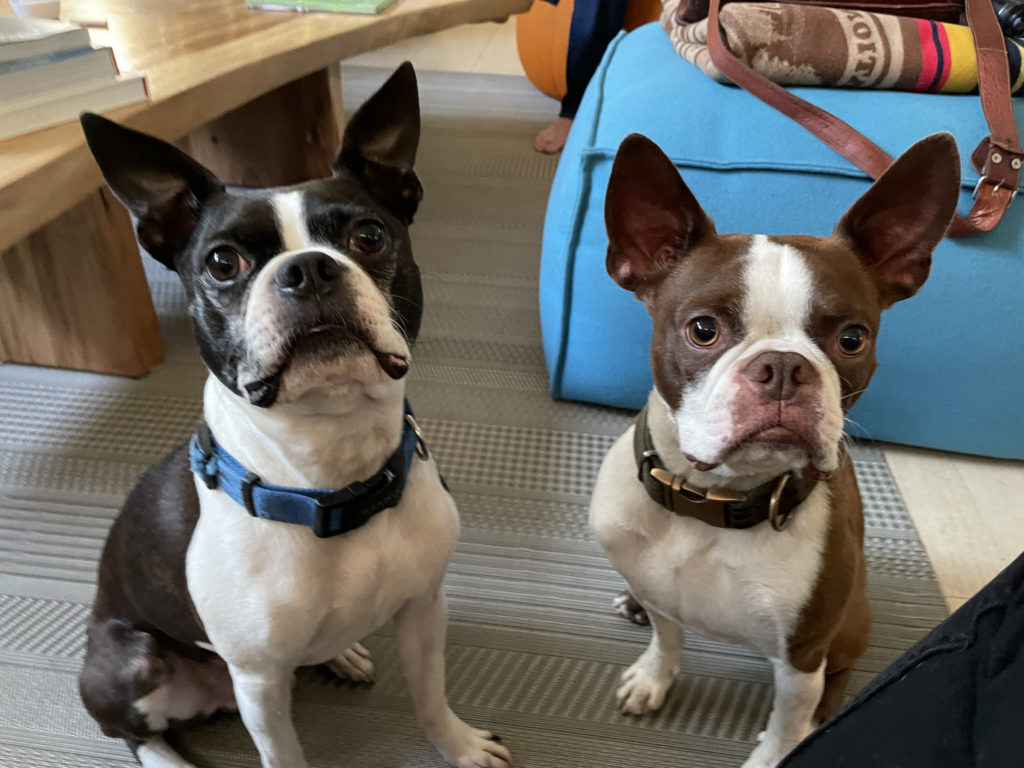Training a Pair of Boston Terriers to Stop Pulling on the Leash
By: David Codr
Published Date: December 13, 2021
For today’s in-home dog training session we worked with a pair of Boston Terriers; LeBron and Clementine, training them to stop pulling on the leash.
I started out the session by going over a number of dog behavior tips that are often related to dogs pulling on the leash. Making sure that your dog has the proper amount of exercise throughout the day, mental stimulation, that your rewarding desired behaviors and providing good motivation for your dog to listen to you are all crucially important if you want to stop the dog from pulling on the leash.
There are many reasons that dogs pull on the leash but one of the top is that we train them to do so. We often walk dogs with a super short leash, pull them along and interrupt their sniffing behavior which are all frustrating for the dog. It’s also not very efficient if your goal is to burn your dog’s energy. Dogs burn more energy on a walk by sniffing than they do from the locomotion of walking.
One of the secrets to getting a dog to stop pulling on the leash is to motivate them to walk next to you. This is actually pretty easy to accomplish, provided you are practicing in the appropriate location. One of the more common mistakes people make when trying to train a dog to walk on a loose leash is practicing too long or in environments that are too distracting.
Attempting to train a dog to stop pulling its leash while on an actual walk off and sets dogs up for failure. There are many distractions and things that motivate your dog to walk away from you when you are walking outside. For this reason I usually start my loose leash training indoors.
If you want to teach your dog to stop pulling on the leash, the first step is to make sure that your dog associates pressure on the leash with coming to you instead of pulling away. The next step is to lure your dog into position. I find that sometimes it is helpful to practice walking your dog on your right or left side exclusively so that the dog gets into a habit of walking in that position.
The last step is to reward your dog for walking next to you for progressively longer and longer periods of time. At first, you want to reward your dog after the first step and repeat that process over and over until your dog is walking next to you fairly easily. At that point, you can add in an additional step, then two, then three and so on.
After demonstrating how to condition a dog to walk next to you instead of pulling on the leash, I coached the guardians through the exercise a few times. If you’re looking for help with your dogs leash pulling behavior, you should check out the free positive dog training video below.
It was great to see how well the humans and dog responded. The secret to training a dog to walk next to you is to build up their skill set in calm, non-distracting environments until you can achieve a dozen or more steps before you start moving outside. Many people practice this a couple of times and then try to do it on an actual walk but the distractions make this very poor practice which will slow down your progress.
I’d like to see the guardians practice these tips to stop their dog from pulling on the leash twice a day with each dog with each family member in short 1 to 2 minute practice sessions. Shorter, successful and more frequent practice sessions will accelerate the dogs learning process. This is vastly superior than trying to cram in one longer practice session a day to compensate for missing a few shorter ones. The dog is going to remember the last bit of the practice session so it’s really important to end on a success and high note.
To help the guardians remember all of the dog behavior tips we shared in this in-home Santa Monica dog training session, we recorded a roadmap to success video that you can watch below.
Categorized in: Dog Behavior


